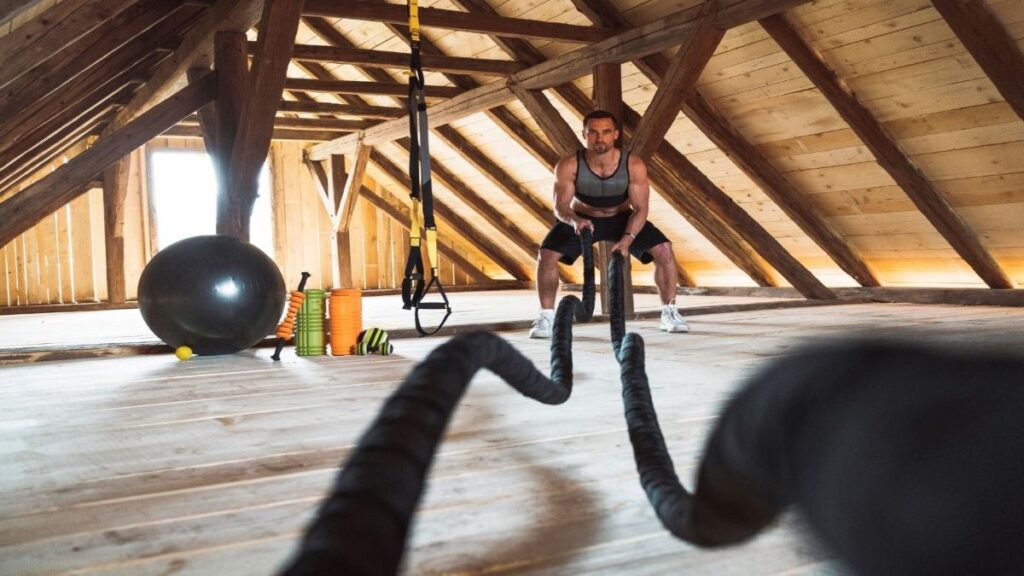
Amidst the array of well-known exercises, the Good Morning stands out as a potent yet underutilized technique to strengthen the posterior chain—the crucial muscles lining the back of your body. This guide will illuminate the proper execution of this dynamic exercise, delve into its multifaceted benefits, and introduce variations to infuse diversity into your exercise routine.
Table of Contents
Executing the Good Morning Exercise
Embarking on the Good Morning exercise begins with proper positioning:
- Align your feet so they’re set apart at the breadth of your shoulders.
- Secure a barbell across your shoulders, ensuring it doesn’t rest on your neck, and grip it tightly.
- Bend your knees subtly, straighten your back, engage your core muscles, and hinge forward from your hips, lowering your upper body until it’s parallel with the ground.
- Hold this position briefly before raising your torso to the initial stance by pushing your hips forward.
Throughout the exercise, it’s crucial to maintain a steady and smooth pace, particularly when returning to the upright position.
Essential Advantages of the Good Morning Exercise
Focus on the Posterior Chain
The Good Morning workout stands out for its effectiveness in fortifying the body’s rear, from the lower back to the glutes and down through the hamstrings. This all-encompassing engagement is key for harmonious muscle development and contributes significantly to improved posture.
Reduces Injury Risks
Strengthening the posterior chain with the Good Morning exercise can decrease the likelihood of sustaining typical injuries, especially those affecting the vulnerable lower back region, often stressed by everyday movements and various forms of exercise.
Enhances Everyday Movement Capabilities
The Good Morning exercise transcends mere strength building; it augments your functional fitness. By simulating everyday actions such as bending and rising, it refines your ability to perform both athletic endeavors and daily tasks with greater ease and efficiency.
Muscle Groups Activated by the Good Morning Exercise
Engaging in the Good Morning exercise primarily targets several key muscle groups:
- The erector spinae, which supports the lower back
- The gluteus maximus, comprising the bulk of the buttocks
- The hamstring muscles, located at the rear of the thighs
Additionally, this exercise also recruits the core and upper back muscles to aid in maintaining balance and stability throughout the movement.
Variants of the Good Morning Exercise
Diversify and intensify your training with these Good Morning exercise adaptations:
Back-Loaded Good Morning
In this classic form, the barbell rests on your shoulders. Ideal for those who are adept at the hip hinge and wish to increase their load.
Front-Loaded Good Morning
By cradling the barbell at chest height, this alternative places greater demand on your core to sustain equilibrium and posture.
Seated Good Morning
Conducted on a bench, this version focuses more intensely on the lower back and is suitable for beginners or those with stability concerns.
Frequent Missteps in the Good Morning Exercise
To maintain the integrity and safety of the Good Morning exercise, steer clear of these errors:
- Allowing the back to curve, a misstep that can place excessive strain on the spinal column.
- Lifting weights that are too heavy prematurely, a practice that may compromise proper technique and increase the risk of injury.
- Excessive bending of the knees, which can inadvertently transform the exercise into a squat.
Integrating the Good Morning Exercise Into Your Workout Plan
Begin introducing the Good Morning exercise into your workout schedule by doing it once or twice per week. Start off with lighter weights to get a solid grasp of the technique, then incrementally add more weight as your proficiency increases. This exercise serves well as a preliminary activity to prime the muscles of the lower body or as a supplementary movement post your primary exercises.
It’s important to prioritize proper form throughout the Good Morning exercise. Embark with manageable weights, hone your technique, and seek advice from a fitness expert if you’re uncertain about your form. When executed with precision, this exercise can significantly enhance your fitness routine.
The Good Morning
Read Also:




